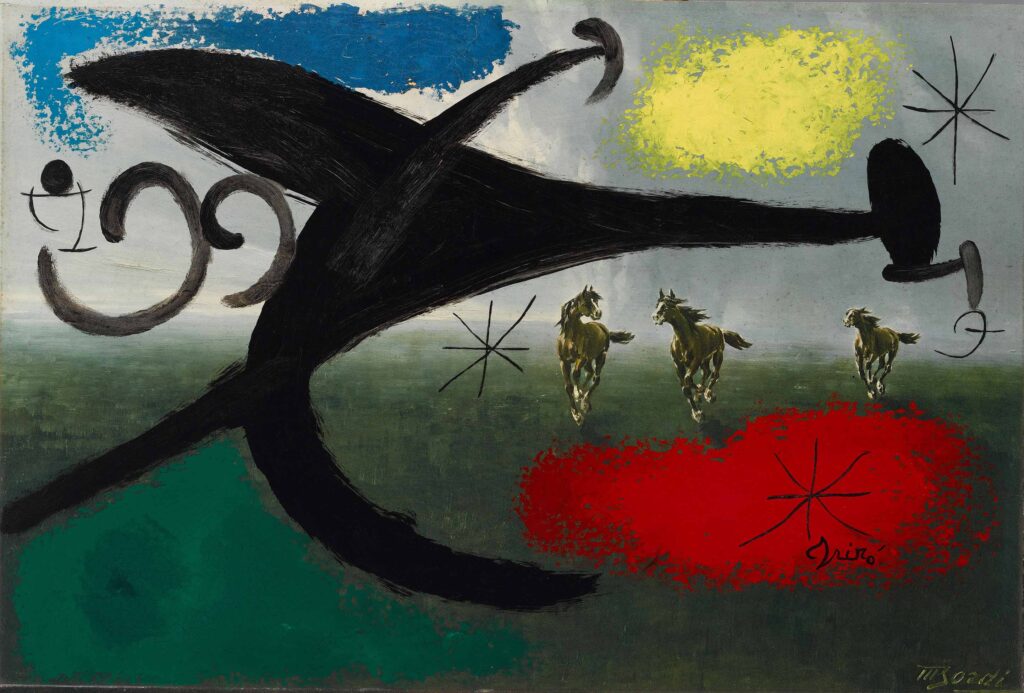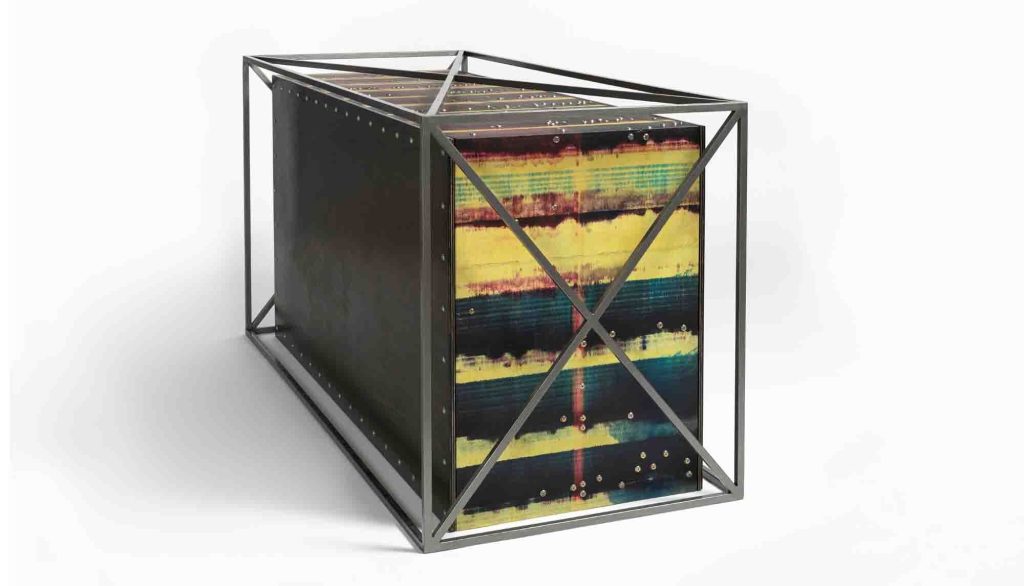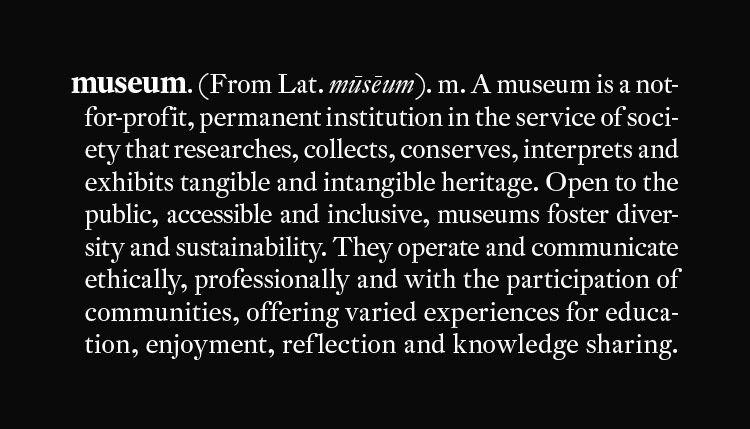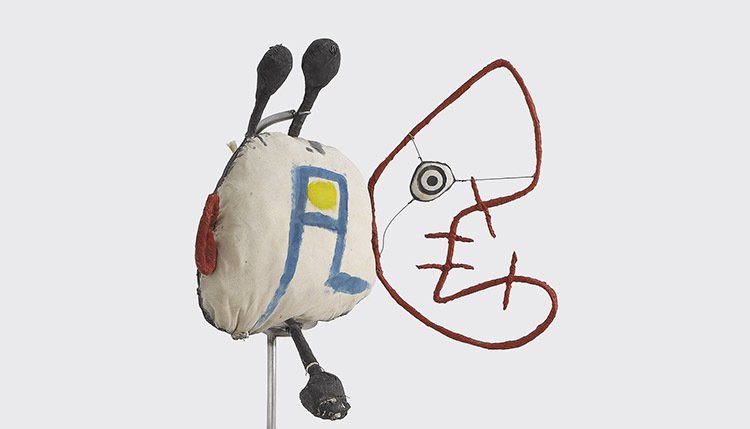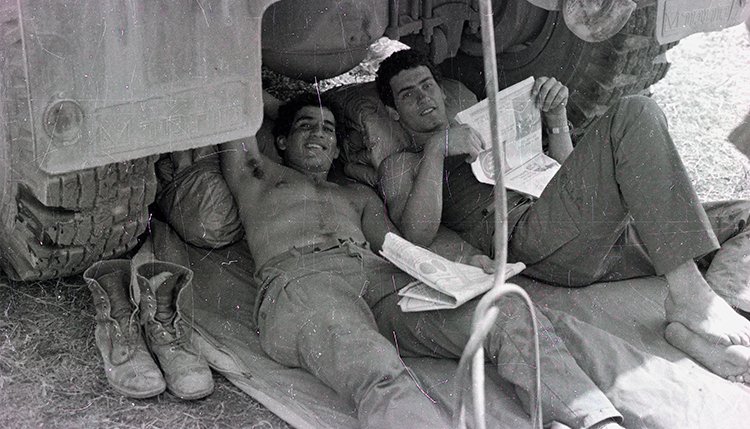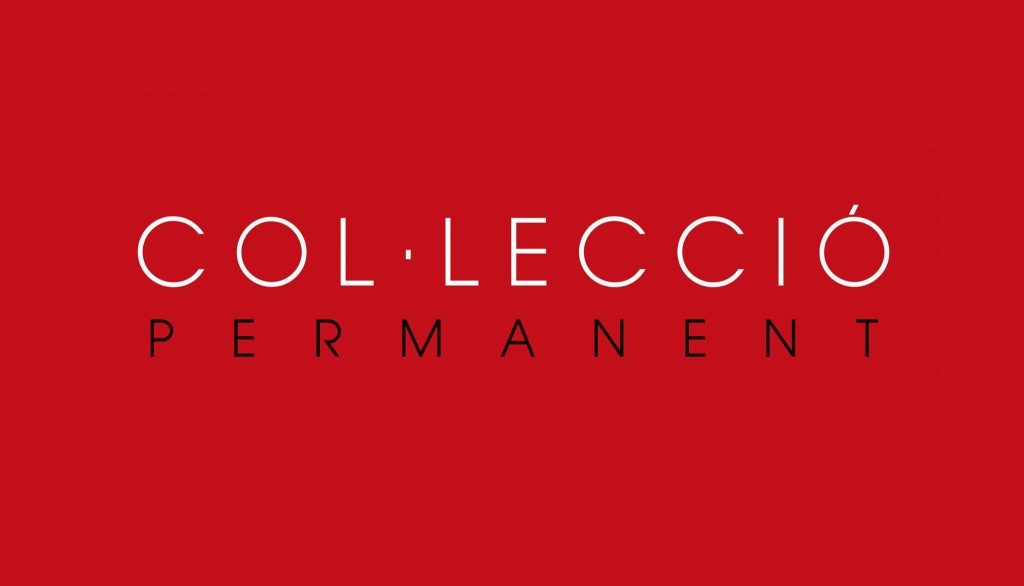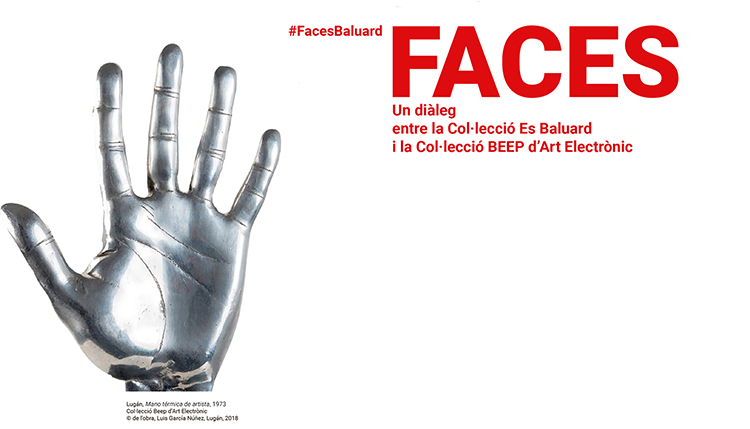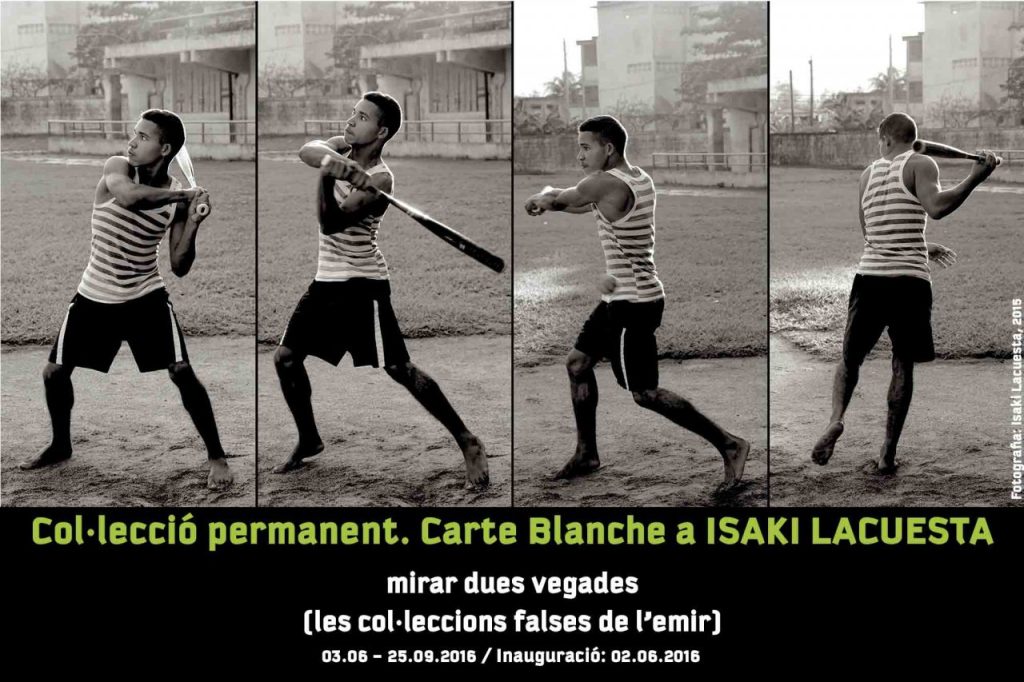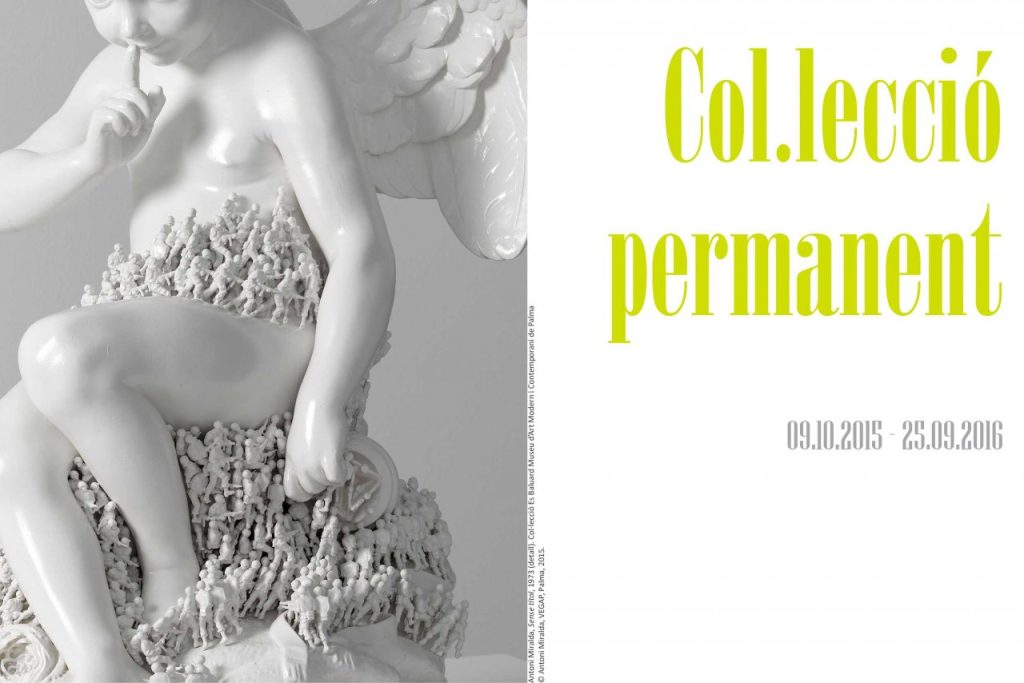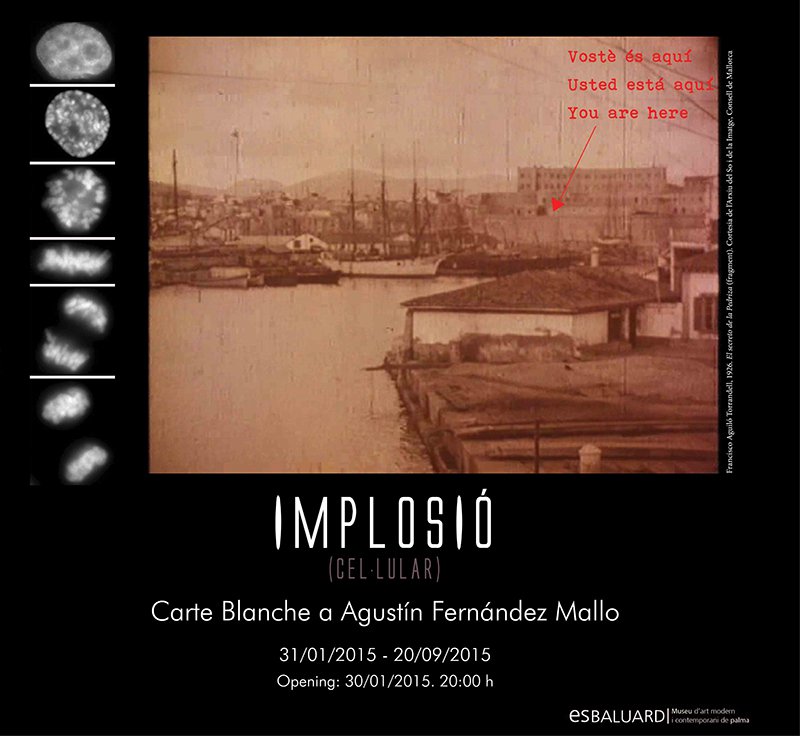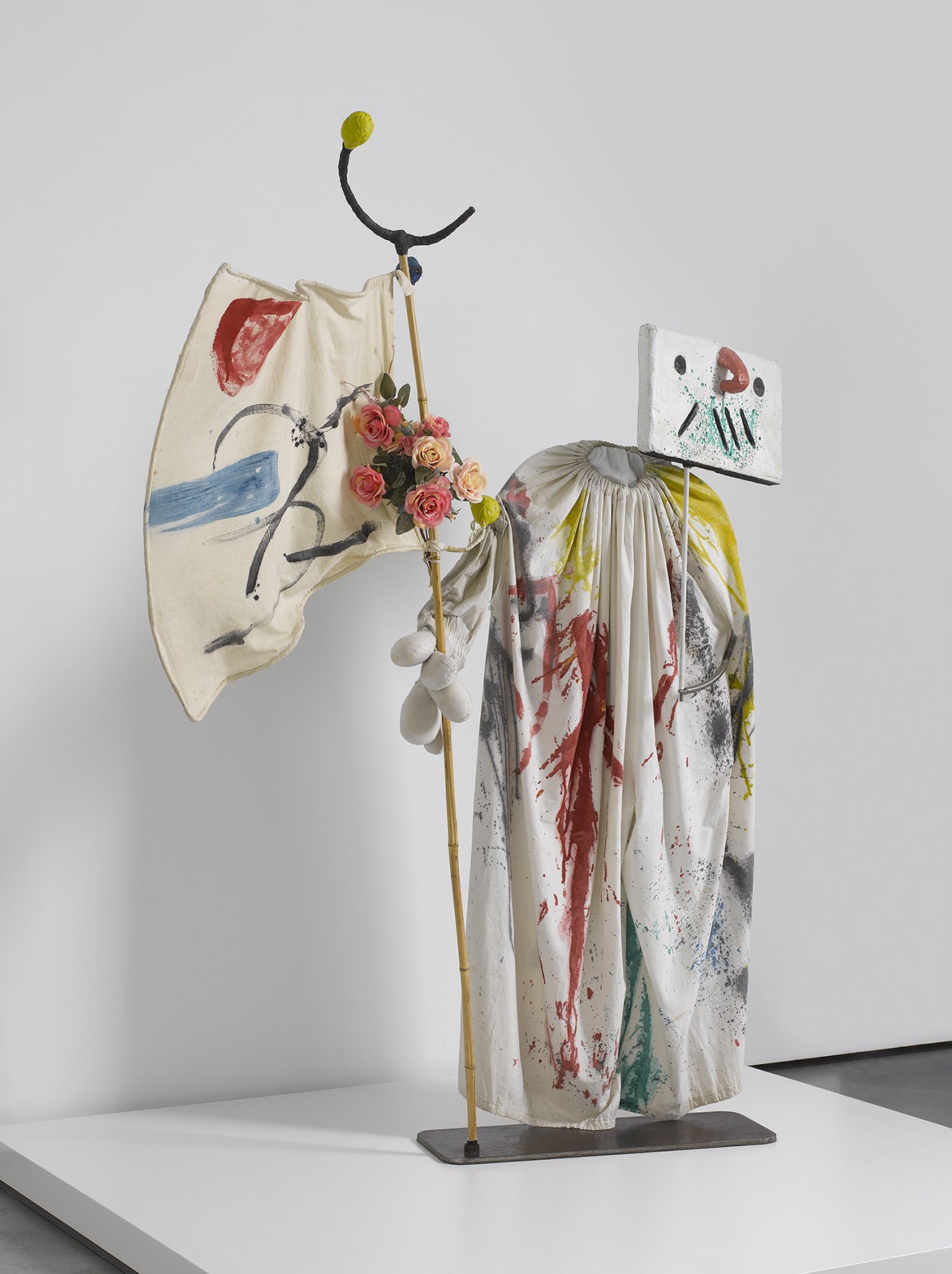
- Artist:
- Joan Miró
- Date:
- ca. 1977
- Technique:
- Paint, fabric and diverse materials
- Dimensions:
- 198,5 x 154 x 45 cm
- Origin:
- Es Baluard Museu d'Art Contemporani de Palma, Govern de les Illes Balears collection long-term loan. Provenance: Pere A. Serra Collection
- Registration number:
- 761
- Acquisition year:
- 2012
- Exposed:
- Yes
After he arrived in Paris in the 1920s, Miró came into contact with the work and personality of the French poet, playwright and visual artist Alfred Jarry, and in particular with his theatrical work Ubu roi, which premiered in Paris in 1896, opening up the doors to the theatre of the avant-garde and the absurd. The main characters in this burlesque farce in which Jarry lashes out against authority and abuse of power, are Père Ubu, a grotesque, vulgar and cynical bloodthirsty tyrant, and his companion Mère Ubu, followed by a court of ridiculous characters.
This attraction towards the figure of Ubú continued in subsequent years, specifically until the latter period of his career. In late 1975 Joan Baixas, director of the group Teatre de la Claca, collaborated with Miró on the gestation of the theatre production Mori el Merma, the premiere of which took place in Palma’s Teatre Principal on 7th March 1978, and 7th June of that same year, it was premiered in the Gran Teatre del Liceu in Barcelona.
Le Chien d’Ubú and El abanderado are two of the characters created for the mise-en-scène of Mori el Merma, a piece without dialogue that takes its name from a Catalan tradition according to which the grotesque big-headed carnival figure which opened the Corpus Christi procession was hounded by children who would cry “Mori el Merma” (Death to the Merma). The Merma as a ridiculous character, like Ubú in A. Jarry’s work, represents Franco, turning the play into a metaphor for Franco’s dictatorship. We should not forget that this work began to be incubated in late 1975, shortly after the death of the dictator.
To maker these life-size creations they used light materials which allowed the actors to move around the stage; to do so, they employed foam rubber, celastic, wire and cane, covering the whole thing with white cotton fabric so that it would become impregnated with the paint applied by the Catalan genius. For the creation of the figures, of which there were over a dozen, including El abanderado and Le Chien d’Ubú, on a formal level they were based on previous works by Miró, specifically L’enfance d’Ubú and Ubu aux Baléars, and they were characterised by a wealth of colour which was controlled to achieve the proper lighting. In the case of Le Chien d’Ubú, Miró devised the character in such a way that when it was turned around, it became a different figure. El abanderado meanwhile is a richer figure in terms of elements, the nosegay it has along with the flag on which Miró traces the number three, a digit that refers to Miró’s interest in symbolism, and which we see again in his sketches and notes related to the theatrical production.
S.H.
After studying commerce, from 1912-1915 Joan Miró studied at the Escola d’Art de Francesc de Galí in Barcelona and attended natural figure drawing classes at the Cercle Artístic de Sant Lluc in Barcelona. In 1956 he made Palma de Mallorca his definitive place of residence, and it was here that his friend, the architect Josep Lluís Sert, designed his studio, Son Boter, along with a house, where he stayed until his death in 1983.
In 1918, in his early days as an artist, he discovered the avant-garde art that came from Paris at the Galeria Dalmau in Barcelona, an event he expressed in his work through a pictorial language influenced by Cezanne and the Fauvists. In 1920 he made his first trip to Paris and his stays in the French capital became frequent, alternating with periods spent in Barcelona and Mont-roig in later years, and his work from this period is influenced by Cubism. It was there that he met artists like Picasso, André Masson or Tristan Tzara and poets like Antonin Artaud and Paul Éluard, among others, linked to Surrealism and Dadaism. Miró remained very close to the Surrealist movement although he never signed any of their manifestos. From 1925 on, Miró purified his language in favour of large stains of colour as a background; he rejected the traditional resources of representation, liberating the creative forces of the unconscious mind. During the Second World War he remained in Spain and created the “Constelaciones” series.
His keenness for research led him to use new resources and techniques and work in other disciplines like collage and assembled paintings. He developed important work in the field of book illustration (such as Ubu Roi in 1966, for example), which is linked to the engraving and in particular lithography, and from 1926 he collaborated several times with the Russian Ballets of Sergei Diaghilev. In 1977, he worked on the piece Mori El Merma with the Catalan drama group La Claca. This ironic work is about the character of Franco, and Miró created the characters and set for it. It was previewed in the Teatre Principal of Palma de Mallorca in 1978. On a sculptural level, he worked intensely on ceramics with Josep Llorens Artigas in 1941 in a lasting collaboration an outstanding example of which are the UNESCO murals of Paris (1958), among others.
He came closer to sculpture gradually, and his work focussed on objects he found which he later combined or manipulated. From 1941 he collaborated with Josep Llorens Artigas on works developed through ceramics and in the middle of the decade he created terracotta models which he would then produce in bronze; he worked on different monumental sculpture projects from the 1960s and at the end of this decade, he intensified his production in bronze and painted bronze. Another medium of expression which took shape in the ‘seventies mainly is the tapestry, with the collaboration of Josep Royo.
He was invited to participate in the Salon d’Automne in Paris (1922), in the pavilion of the Spanish Republic at the Paris Universal Exposition (1937) and in the Venice Biennial (1954). Throughout his career he won significant prizes and distinctions: the Guggenheim Award (1958), Honorary Member of the American National Academy of Arts and Letters, Carnegie International Grand Prize for Painting (1967), Honorary Doctorate from Harvard University (1968), French Legion of Honour (1974), Gold Medal of the City of Barcelona (1978), Honorary Doctorate from the Universitat des Illes Balears (1979), Spanish Gold Medal of the Fine Arts (1980), and others.
As well as the two foundations created in order to safeguard his work – the Fundació Miró (Barcelona), inaugurated in 1975, and the Fundació Pilar i Joan Miró a Mallorca, in 1993 – his work forms part of the collections of both Spanish and international museums: the Museum of Modern Art (New York), Centre Pompidou (Paris), Museo Nacional Centro de Arte Reina Sofía (Madrid), The Art Institute of Chicago, Neue Nationalgalerie (Berlin), Museu d’Art Contemporani de Barcelona, Fondation Maeght (Saint-Paul-de-Vence), Fondation Beyeler (Basel), Tate (London), Es Baluard Museu d’Art Modern i Contemporani de Palma, among others.
E.B.
